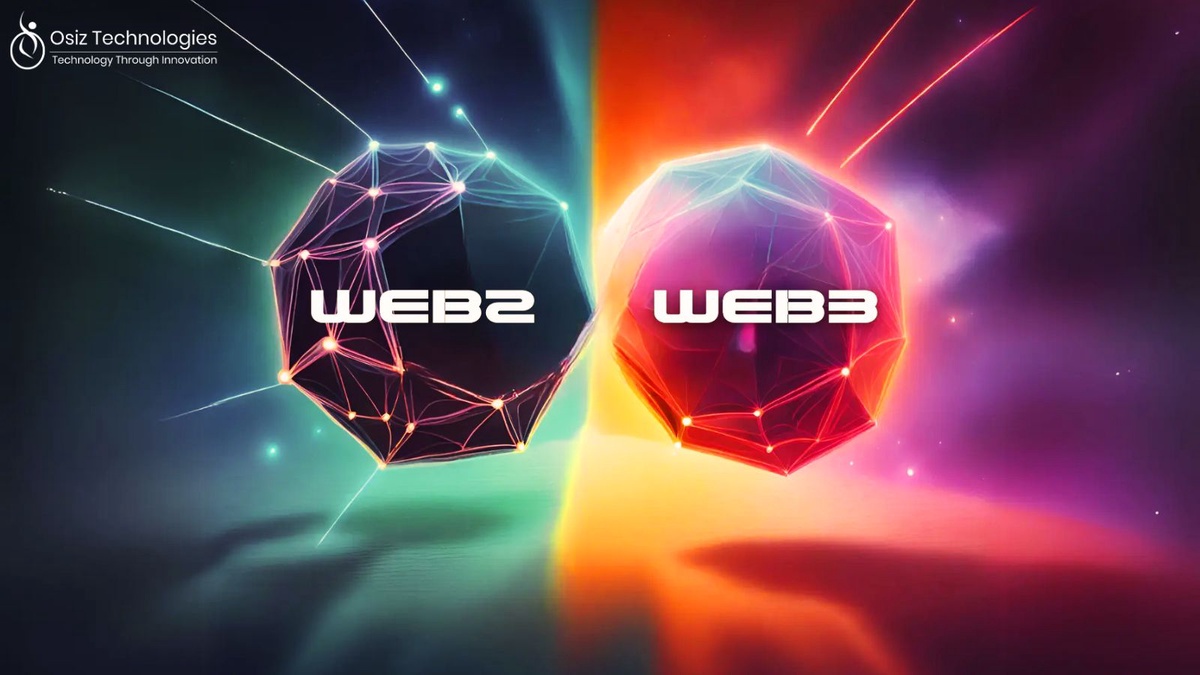The internet, like any living entity, constantly evolves. We've witnessed this evolution in two major phases: Web1 and Web2. Today, we stand at the cusp of a potentially revolutionary shift with the emergence of Web3 development. But what are the key differences between these iterations of the web, and why is understanding them so important?
Defining Web2 and Web3
Web2, also known as the social web, is the current iteration of the internet. It's characterized by centralized platforms like Facebook, Google, and Amazon that dominate online experiences. These platforms facilitate user-generated content, social interaction, and information sharing, but with a crucial caveat: they control the data.
Web3, often referred to as the decentralized web, seeks to fundamentally change this dynamic. By leveraging blockchain technology and distributed ledger systems, Web3 aims to create a more user-centric internet where individuals own and control their data.
Importance of Understanding the Differences:
Understanding the differences between Web2 and Web3 is crucial for several reasons:
- Empowering informed decision-making: As users, we navigate an increasingly complex digital landscape. Grasping these differences allows us to make conscious choices about the platforms we use and how we share our data.
- Identifying emerging opportunities: Web3 presents potential opportunities for innovation and disruption across various sectors. Understanding its principles can help individuals and businesses navigate these opportunities strategically.
- Anticipating societal and economic impact: The transition to Web3 has the potential to reshape our digital world significantly. Recognizing the associated challenges and considerations allows for informed discussion and responsible development.
Evolution of the Web:
To fully comprehend the current state and future possibilities, let's delve deeper into the evolution of the web:
- Web1 (1989-2005): This was the "read-only web," characterized by static websites with limited interactivity. Users primarily consumed information passively.
- Web2 (2005-present): This phase marks the "social web" where user-generated content, social interaction, and collaboration take center stage. However, centralized platforms control user data and often monetize it through advertising or data sales.
- Web3 (Emerging): This nascent stage aims to become the "decentralized web," empowering users with ownership and control of their data by leveraging blockchain technology.
Core Concepts of Web2:
Centralization of Data and Control: Data generated by users resides on and is controlled by centralized platforms. This raises concerns about privacy, security, and potential misuse of data.
User Dependency on Intermediaries: Users rely on these platforms to access services, communicate, and share content. This creates a dependence on intermediaries and their policies.
Business Models and Monetization Strategies: Web2 platforms primarily rely on advertising, data sales, and subscription models for revenue generation.
Characteristics of Web3:
Decentralization and Distributed Ledger Technology: Data is distributed across a network of computers, eliminating centralized control points and improving resilience to censorship and manipulation.
Empowerment of Users through Ownership and Control of Data: Users own their data and can control how it's used and shared. This fosters personal data sovereignty and privacy.
Smart Contracts and Decentralized Applications (DApps): Self-executing contracts on blockchains automate transactions and power dApps, offering a wide range of internet applications without relying on centralized authorities.
Contrasting Architectures:
Infrastructure and Data Storage: Web2 relies on centralized servers, while Web3 utilizes distributed ledger technology and peer-to-peer networks for data storage.
Governance and Decision-Making Processes: Web2 platforms have centralized governance structures, while Web3 often employs community-driven decision-making through token-based voting or consensus mechanisms.
Trust and Security Models: Web2 relies on trust in centralized platforms, while Web3 aims for trustless systems where transparency and security are inherent to the distributed ledger technology.
Implications for Users and Businesses:
- User Privacy and Data Ownership: Web3 promises greater user control over data, potentially leading to increased privacy and security. Businesses will need to adapt to user-centric data management practices.
- Opportunities for Innovation and Disruption: Web3 opens doors for innovative applications and business models across various sectors, including finance, web3 gaming, and social media.
- Challenges in Adoption and Transition: Technical complexities, scalability issues, and the need for user education are significant challenges that need to be addressed for widespread Web3 adoption.
Examples and Use Cases:
- Cryptocurrencies and Blockchain Platforms: Bitcoin and Ethereum are prime examples of Web3 technology, showcasing decentralized digital currencies and peer-to-peer transactions.
- Decentralized Finance (DeFi): Web3 enables financial services like lending, borrowing, and trading,
- Non-fungible tokens (NFTs) and Digital Ownership: NFTs represent unique digital assets, fostering new possibilities for digital ownership and monetization of creative content.
Future Outlook:
- Potential Developments and Trends: Interoperability between blockchain platforms, improved user interfaces for DApps, and the emergence of new use cases across industries are potential future developments.
- Societal and Economic Impact: Web3 has the potential to reshape our interaction with the digital world, impacting areas like governance, trust models, and economic activity. It's critical to consider potential ethical and societal implications during development.
- Challenges and Considerations for the Future: Issues like energy consumption of blockchain technology, regulatory frameworks, and potential for misuse require careful consideration and ongoing development to ensure responsible and sustainable growth of Web3.
Conclusion
The transition from Web2 to Web3 presents both challenges and opportunities. Understanding their key differences empowers us to navigate this complex landscape. While the future of Web3 is still unfolding, it holds the potential to create a more user-centric, secure, and innovative digital world. However, this transition requires responsible development, addressing challenges, and fostering collaboration to ensure a sustainable and impactful future for the web.
This blog post has provided a brief overview of the key differences between Web2 and Web3. While the concepts might seem complex at first, exploring further resources and engaging in discussions can help deepen your understanding of this rapidly evolving technological landscape. Remember, the future of the web is being shaped today, and informed participation can contribute to a more inclusive and beneficial digital future for everyone.


No comments yet